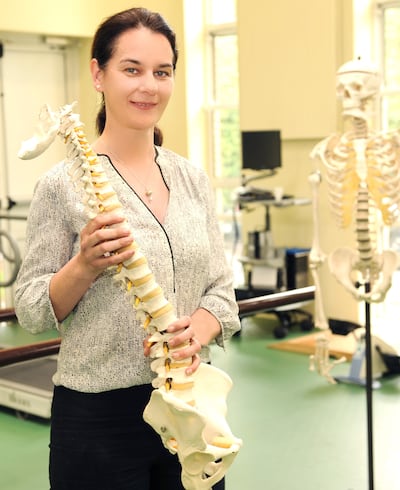Back pain is one of the most common ailments, with four in five people suffering from low back pain at some stage in their lives. "Twenty per cent of people have back pain at any one time – and the majority of this will clear within three to six months," says Antoinette Curley, a clinical specialist physiotherapist in Tallaght Hospital, Dublin.
However, contrary to what many believe, the most effective treatment for back pain is often exercise and physical activity – and not bed rest. “Research shows that there isn’t one form of exercise that is superior to another. What we want is people doing the exercise that they enjoy – whether it’s walking, swimming, pilates or yoga. It has to be something that’s available for people to do.”
Curley, who works with spinal surgeons at Tallaght Hospital, says that 80 per cent of GP referrals for spinal surgery do not require surgery. “Most of these people need rehabilitative exercises and advice.”
The key is to get moving again and not to focus too much on the source of the back pain. “Often, it’s hard to pinpoint the exact ligament or muscle that’s causing the pain. It can be a combination of muscle, ligament and joint pain and resuming normal activities gently and gradually is more important than seeking out a precise diagnosis,” she adds.
Misleading
Results of magnetic resonance imaging (MRI) or CT scans can be misleading for people with low-back pain. One 2015 study in the American Journal of Neuro-Radiology found images of wear and tear in a large number of patients who never had symptoms of back pain. Other studies point to the increased rate of surgery in patients with back pain who have MRI.
“MRI and other back pain investigations can reinforce the idea that something might be broken or crooked. Sixty to 80 per cent of the normal population will have a disc bulge on an MRI scan without back pain. However, there are exceptions and sometimes imaging finds something important, which is why these tests are appropriate for some kinds of severe and persistent low-back pain which has leg pain as well,” says Curley.
Canadian doctor Dr Mike Evans has become renowned across the world for his simple yet accurate advice on dealing with back pain. His YouTube clips are recommended to patients by many physiotherapists keen to suggest a reliable health information source to go to for support and advice.
In his You Tube clip on back pain, Dr Evans states that almost all back pain is benign. However he also highlights the so-called red flags to watch out for. These include back pain accompanied by sudden changes in bowel, bladder or rectal areas or back pain accompanied by weight loss – all of which indicate a more serious condition. There is also a small percentage of people whose back pain is caused by bones broken following a fall, a car crash or osteoporosis.
Perception of pain
Curley runs weekly exercise classes for people with persistent lower-back pain. “Pain is like a fingerprint – it’s different for everyone. Anxiety, stress, low mood can affect our perception of pain,” she says. In the classes, she looks at the perception of pain, how back pain doesn’t always mean that there is damage to the back and can instead be an increased sensitisation. “Low levels of physical activity, sleep disturbance, worry and low mood can all contribute to the sensitisation of back pain so we look at the importance of sleeping well, exercise and healthy diet as well as cutting out smoking.”

Cigarette smoking is another somewhat unexpected factor in the perception of pain among sufferers of back pain. One study of more than 5,000 patients followed during treatment for spinal disorders found that cigarette smokers reported far more pain than those who never smoked or those who quit. Giving up cigarettes prior to or during treatment was also linked to decreasing levels of pain reported.
The links between carrying heavy bags – particularly school bags – is something many people are concerned will give rise to lower-back pain. However, the Irish Society of Chartered Physiotherapists (ISCP) says children may be better off carrying the heavy school bags to make them stronger. "If a child – or their parents – believes that the schoolbag is too heavy, the child is more likely to develop back pain, which highlights the importance of fear in the development of back pain," writes Dr Kieran O'Sullivan and Dr Mary O'Keeffe on the ISCP leaflet Back Pain: Separating sense from nonsense.
Lifting incident
O’Keeffe and O’Sullivan say that while a lifting incident could initially give a person back pain, people who do the most lifting and bending do not necessarily get more lower-back pain.
“Bending and lifting are normal activities and should be practiced to help strengthen the back, similar to returning to running and sport after spraining an ankle,” they say.











